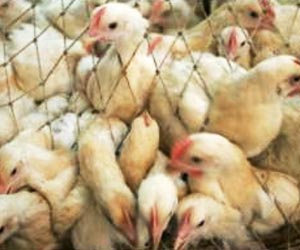Concentrations of ducks, rice paddies and people are primarily responsible for outbreaks of potentially deadly bird flu across Asia, the UN Food and Agriculture Organisation said Wednesday.
"Rather than chickens, (these) are the major factors behind outbreaks of H5N1 highly pathogenic avian influenza in Thailand and Vietnam, and are probably behind outbreak persistence in other countries of the region such as Cambodia and Laos," said a report by the Rome-based agency.It said a group of experts had studied a series of outbreaks between early 2004 and late 2005 under senior FAO veterinary officer Jan Slingenbergh, publishing its findings in the latest issue of the Proceedings of the National Academy of Sciences of the United States.
"We now know much better where and when to expect H5N1 flare-ups," Slingenbergh said.
"With virus persistence becoming increasingly confined to areas with intensive rice-duck agriculture in eastern and southeastern Asia, evolution of the H5N1 virus may become easier to predict."
By comparing satellite mapping of rice paddies, to show the concentration of ducks feeding on leftover grains in harvested fields, to outbreak timelines, the researchers were able to draw a link and pinpoint periods when the risk of the virus spreading is at its greatest.
The role played by people comes in terms of population density, with people numbers influencing duck movement.
Advertisement
"These rapidly growing young ducks can therefore benefit from the peak of the rice harvest in November-December."
Advertisement
Ninety percent of the world's 1.044 billion domestic ducks are in Asia, with 775 million of them, or about 75 percent, in China and Vietnam.
In 2005, Thailand introduced the need for animal health certificates for duck farmers, along with subsidies for indoor keeping of the birds, feeds and enclosure building.
"Together, these measures stopped the H5N1 transmission cycle and since late 2005, Thailand has suffered only sporadic outbreaks," the report noted.
Slingenbergh added that indiscriminate mass vaccination -- which the authors found had little long-term effect in Vietnam, for example -- should be replaced by such targeted disease control measures working off local rice-duck calendars and known hotspots.
Source-AFP
SRM/L





